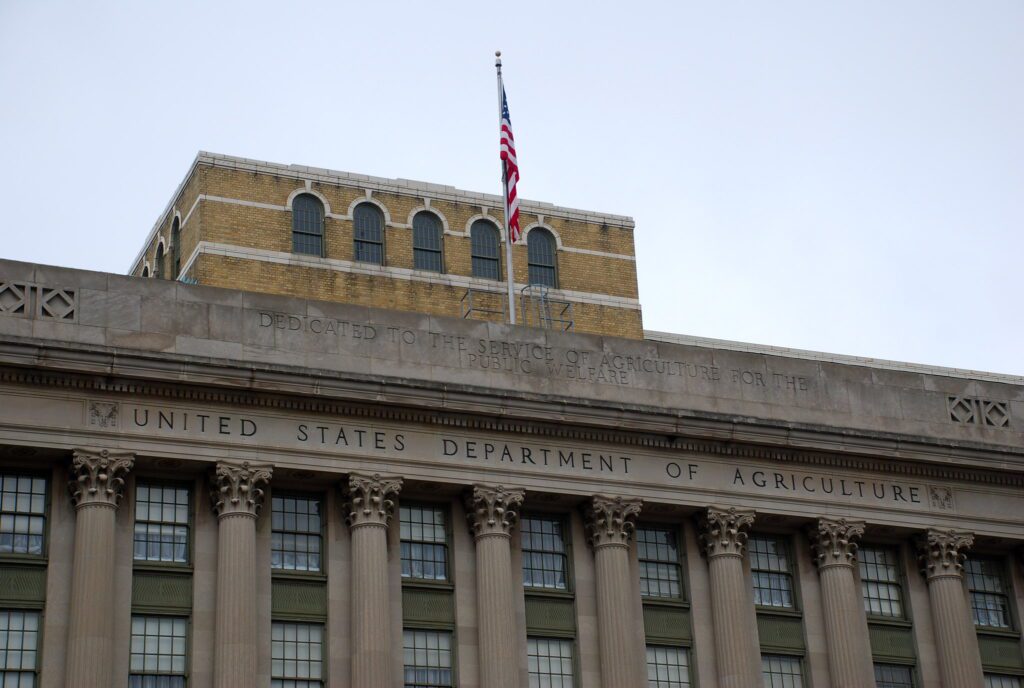The U.S. Department of Agriculture (USDA) held the 99th Agricultural Outlook Forum last week, where many speakers highlighted the potential of biotechnology and bio-based products.
Agriculture Secretary Tom Vilsack opened the event by promoting climate-smart agriculture, sustainable aviation fuel, and other bio-based products for people and the planet.
USDA’s $3 billion Partnership for Climate-Smart Commodities supports 141 projects piloting ways to “de-risk our farmers from embracing climate-smart practices by turning those practices into profits,” said Secretary Vilsack in his keynote. This includes opening carbon markets, which can be done through the Growing Climate Solutions Act, said Vilsack. The legislation, supported by the Biotechnology Innovation Organization (BIO) and passed as part of last year’s omnibus spending package, tasks the USDA with opening carbon markets to more farmers and foresters.
Vilsack mentioned USDA support for projects that develop bio-based products, like an asphalt substitute made from soybeans. USDA’s BioPreferred program promotes the use of these products. (BIO backs that program and wants it strengthened.)
“The best example I can give you is sustainable aviation fuel,” he said when describing government support for bio-based products made from agricultural feedstock. “This is a whole new industry that hasn’t existed,” but now sees demand for 36 billion gallons.
Why biotech investors need regulatory certainty
Another session, “Agricultural Biotechnology: New Horizons for Consumers and Producers,” addressed biotechnology practices, funding, regulations, and projects being executed.
Tom Addams, co-founder, and CEO of Pairwise, a pioneering food start-up, talked about how more investments in agriculture biotech are necessary. He emphasized that investment is critical for the future of business, but to get investors, a joint effort is needed to establish a landscape that will provide stability for those investors.
He highlighted the uncertainty involved in such ventures and the need for collaboration with agencies like USDA to create this certainty in the path forward.
“It’s a growing area, and there’s more investors, but it takes patience because it takes longer to develop agricultural products,” Addams said.
“We’ve been really fortunate in Pairwise to get a good set of investors, but you have about the technology risk and other types of risks like how the public accepts the product, and as investors are looking at these, it’s important that we are all working together to create more certainty,” he argued.
From better berries to pitless cherries
Addams also discussed Pairwise’s work and how they use innovative breeding technologies to get the best out of fruit and vegetables.
“Most crops have about 30,000 genes. Imagine 30,000 marbles that you stick into a bag and pull out the ones that you want. That is what a breeder is doing. And with the help of gene editing, you can pick whichever marbles you want to be changed, so it speeds up the process,” explained Addams.
Addams discussed Pairwise’s berry breeding program that involves collaboration between USDA and universities. The project aims to improve the genetic diversity of berries, including blackberries and raspberries. The main objective is to develop a seedless blackberry – according to a study, 85% of consumers dislike the seeds.
Addams also spoke about work to develop a pitless cherry.
“With gene editing, because we understand the genes that are involved with the pits, we can alter just that gene – a process that is faster and more efficient – ending up with a product that would drive consumption of a lot more cherries,” he said. Pairwise is thinking of turning the cherry tree into a bush to increase the quantity and make cherries more resilient to climate problems.
USDA advances regulatory exemptions
Bernadette Juarez, a deputy administrator of the Animal and Plant Health Inspection Service (APHIS), a biotechnology regulatory service of USDA, discussed the recent modernization of USDA’s regulations for biotechnology products. The focus of the modernization effort was creating a clear and consistent regulatory framework.
She said the regulations have three key components, with two being exemptions and a regulatory status review process. The exemptions allow certain modified plants to be exempt from regulatory requirements. Developers can submit a small amount of data to confirm their product meets the criteria for exemption. The regulatory status review process has a two-step process for reviewing plants that do not qualify for an exemption, to make the process more accessible to small and medium-sized businesses.
NIFA programs in biotech
John Erickson, the national program leader of the National Institute of Food and Agriculture (NIFA), talked about how this institution is centered on funding agriculture-related programs that support the long-term sustainability of agriculture, with a particular focus on translating scientific advancements into practice for growers and farmers.
NIFA’s programs include the Agriculture and Food Research Initiative (AFRI), Biotechnology Risk Assessment Grant Research Program, Specialty Crop Research Initiative, and Bio-Product Pilot Program. They also support education and workforce development.
Erickson noted that all of the NIFA projects are focused on improving the production of specialty crops and perennial crops, which take longer to grow and breed, adding that the improvement may involve using editing techniques or identifying specific traits or genes that can speed up the process of delivering these crops to market.




